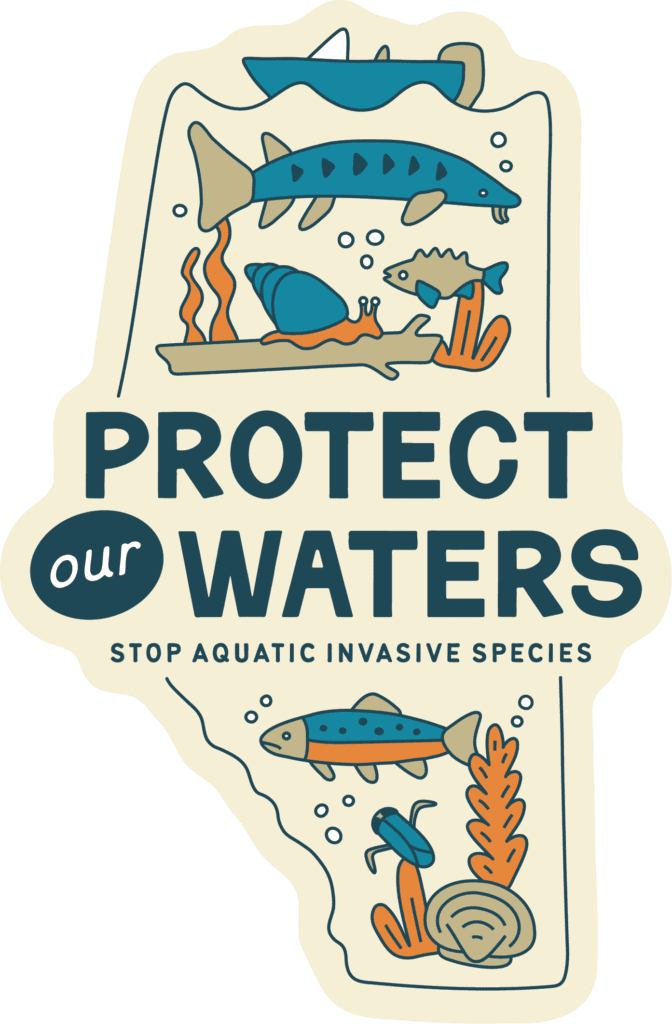
Alberta's lakes, rivers, wetlands, and irrigation reservoirs provide habitat for aquatic organisms, offer recreational opportunities, and supply critical drinking water, as well as power and irrigation infrastructure. Many beloved and charismatic species, such as the at-risk lake sturgeon, depend on healthy waterways, including frogs, salamanders, snails, insects, plants, and fish. However, aquatic invasive species are expanding across North America and threaten the well-being of our waterways.
Alberta remains one of the few jurisdictions free of invasive zebra and quagga mussels, though their range is expanding ever closer. A single contaminated watercraft or bait bucket can introduce invasive mussels and other aquatic invasive threats to our waters, leading to serious ecological damage, immense maintenance costs on our water-dependent infrastructure, and diminished aquatic recreation opportunities.
Protect Our Waters is a call to action - this campaign aims to stop aquatic invaders in their tracks by promoting messages such as 'Clean Drain Dry' and empowering the public to take action, so we can protect the waters we love.
What are Aquatic Invasive Species?
Aquatic invasive species (AIS) are non-native plants, animals, or pathogens that spread in aquatic environments, causing harm to ecosystems, infrastructure, and economies. They often outcompete native species, disrupt food chains, and damage habitats. Once established, AIS are extremely difficult—and costly—to control or remove. In Alberta, there are 52 prohibited species listed in the Fisheries (Alberta) Act - all of which are illegal to import, transport, and possess in the province.
Key species of concern in Alberta include zebra and quagga mussels, which can clog pipes and dominate lakebeds; plants such as curly leaf pondweed and Eurasian watermilfoil, choke waterways and limit recreation; and whirling disease, which threatens native trout and whitefish populations. Other threats include common carp, flowering rush, European water chestnut, Asian clams and New Zealand mud snails, which alter ecosystems when introduced. These species can spread through contaminated watercraft, bait bucket releases, or equipment.


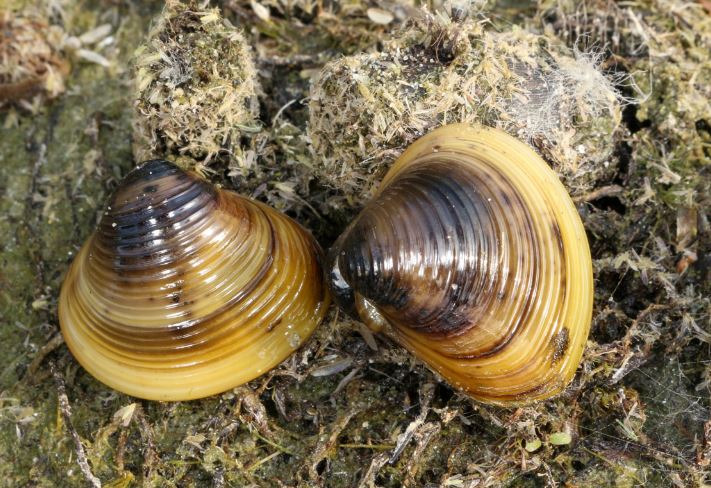

Aquatic invaders threaten Alberta's waters. Here's how you can help protect them:
![]()
CLEAN - Remove all visible plants, mud, and sand before leaving the shore. Rinse, scrub, or pressure wash your boat and equipment away from storm drains, ditches, or waterways. Use hot water if possible.
DRAIN - Once on shore, drain all water from boats by removing the bilge plug and water from livewells, buckets, internal compartments, etc. Transporting watercrafts (motorized and non-motorized) with the drain plug in is illegal. Failure to pull the plug may result in a $600 fine.
DRY - Allow all parts of your boat and equipment to dry completely before entering another water body. Leave compartments open and sponge out any standing water.
Although Clean, Drain, Dry is effective against most aquatic invasive species, preventing the spread of whirling disease requires additional care. This disease affects Salmonid species (trout, whitefish, and salmon) and is caused by a microscopic parasite, Myxobolus cerebralis, that can survive in mud and moisture. For high-risk activities or areas, additional steps to prevent transmission require removing all mud and organic debris from gear, waders, and equipment. Use hot water (at least 50°C) or a disinfectant like bleach for decontamination. Ensure all items are thoroughly dried for a minimum of 24 hours before reuse in another water body.
We urge all water users to Clean, Drain, Dry their equipment every time. Mandatory inspection stations, public outreach, free and easy-to-use CD3 machines, and strong partnerships reinforce the message: protect Alberta’s waters. Every boater’s actions matter in keeping invasive species out!
1. NO FREE RIDE FOR INVASIVE SPECIES
Many aquatic invasive species are very difficult to eradicate once they are established, so prevention is essential. Aquatic invasive species come in all forms. Zebra and quagga mussels, curly leaf pondweed, and bighead carp are all prohibited species that pose a major threat to our ecosystems and can easily a ride in on any type of equipment - from motorized boats to fishing gear, Clean, Drain, Dry after every use.
When highway signage indicates that a watercraft inspection station is open, it is mandatory that everyone transporting a watercraft must stop to have their boats, trailers, and other water-related equipment inspected for invasive species (see 4. Know the Law!).
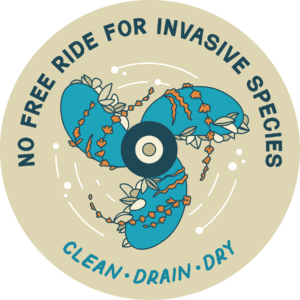
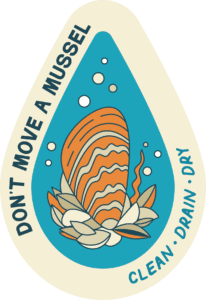
2. DON'T MOVE A MUSSEL
Invasive mussels—specifically zebra, quagga, and golden mussels—threaten the province’s lakes, rivers, and infrastructure. These tiny but destructive freshwater species can clog water intake systems, damage boats, disrupt ecosystems, and cost millions in maintenance and control. Alberta is currently mussel-free, but they are increasingly establishing in waterbodies in Manitoba, and around 15-20 mussel-fouled watercraft per year are intercepted at provincial watercraft inspection stations. Females can produce up to one million eggs each year. Their larvae (called veligers) are microscopic and float in water. As filter feeders, invasive mussels strip nutrients from the water, collapsing aquatic food webs and threatening native species. Mussels can survive out of water for up to 30 days and easily hitch a ride on boats, trailers, and gear. Zebra, quagga, and golden mussels attach themselves to any hard surface - an ATTACHED mussel is an INVASIVE mussel and must be reported—native mussels are present in the province, but they will not attach and rather bury within the sediment of rivers and lakes.
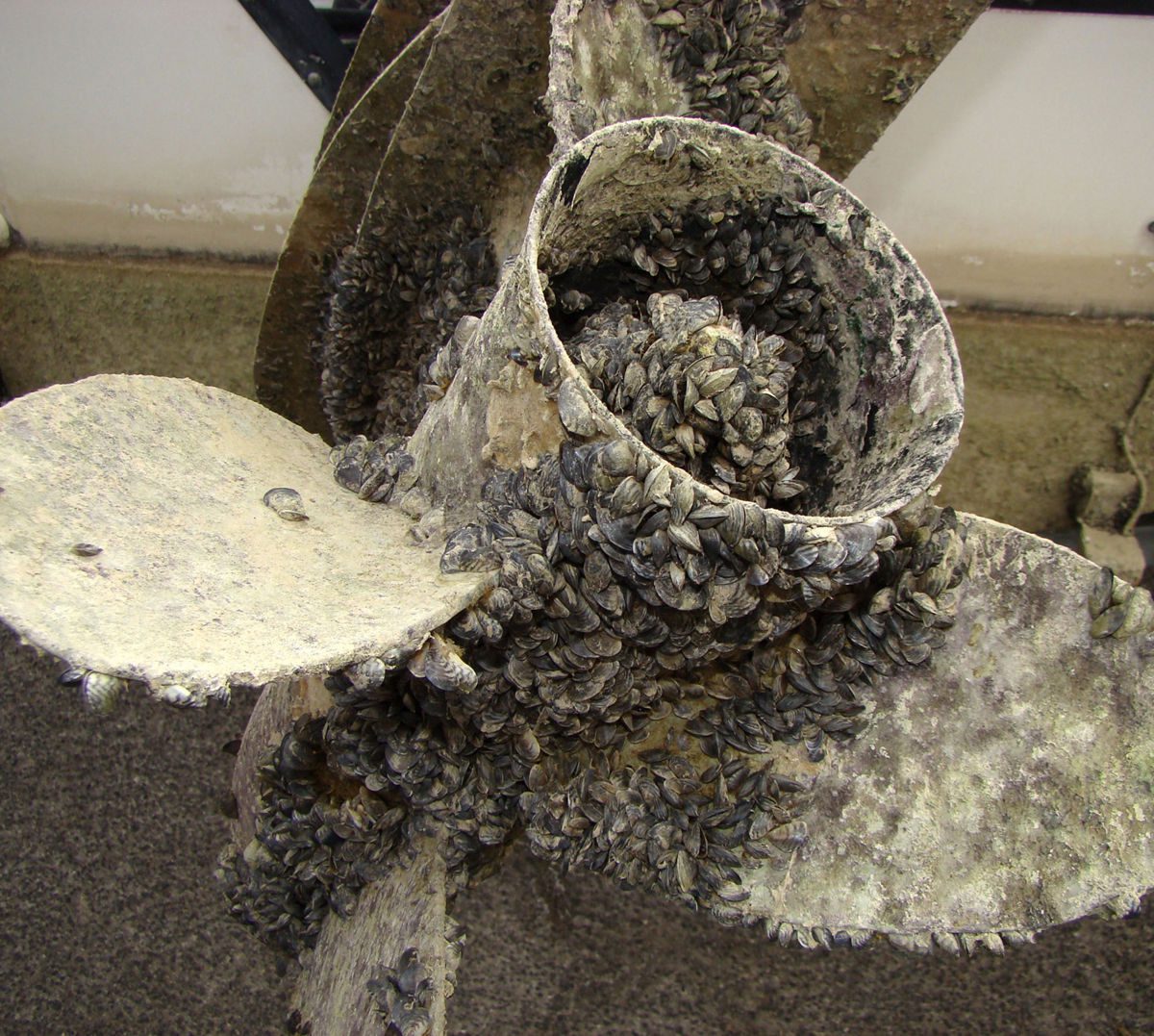
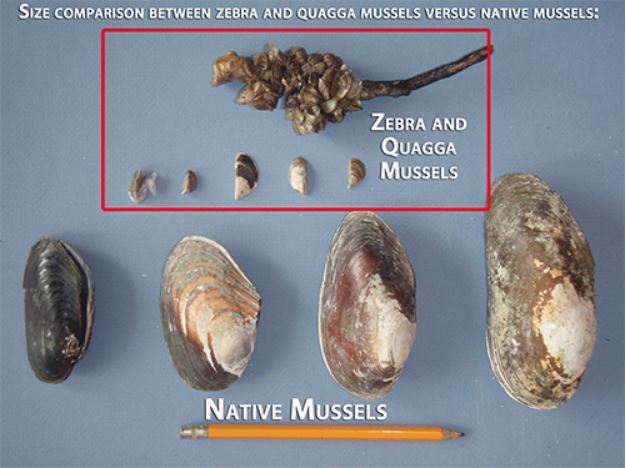
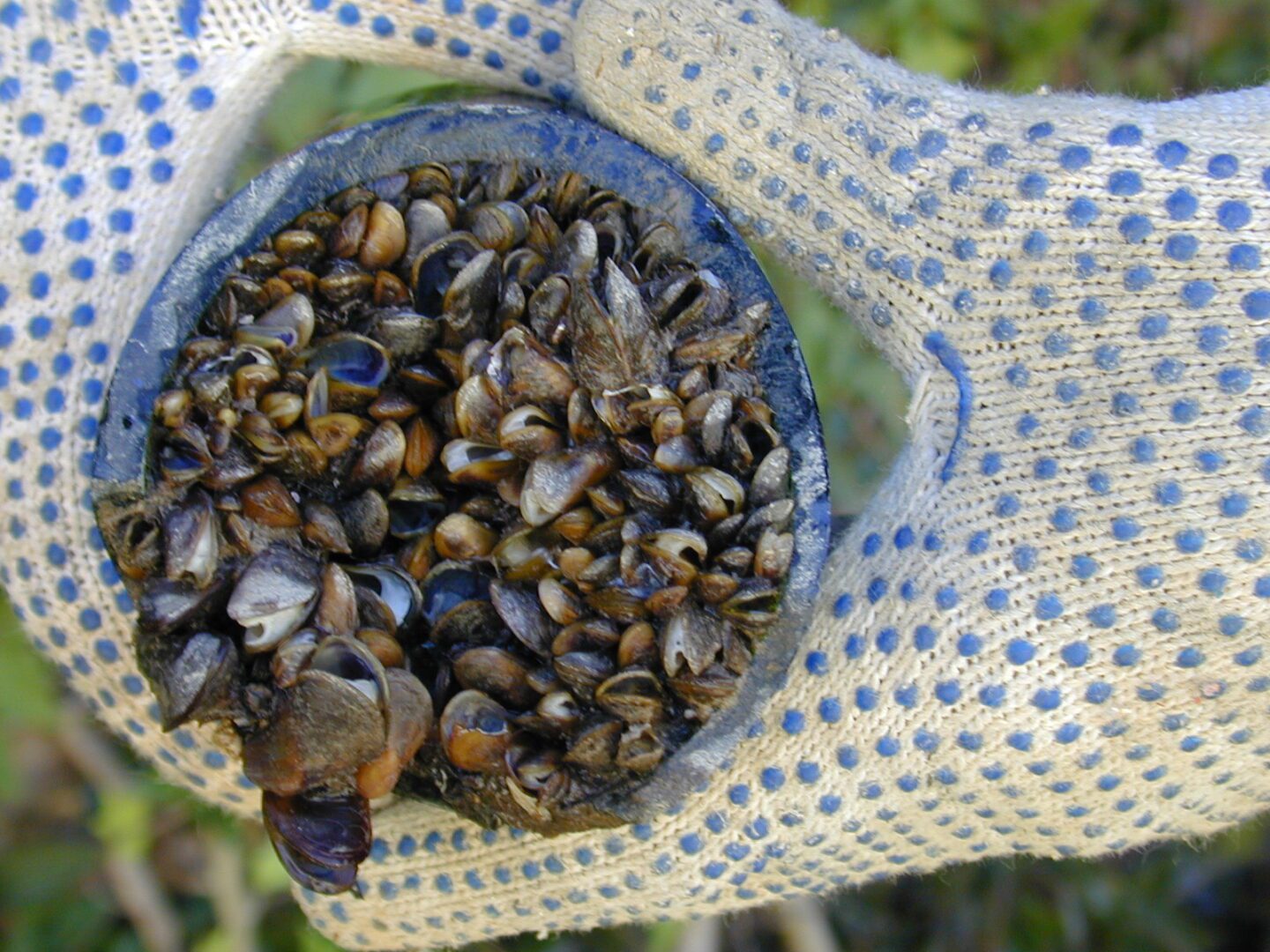
3. IF IT FLOATS, IT'S A BOAT
Objects like inflatable kayaks, paddleboards, and rafts are all considered watercraft since they are used for navigation and must be inspected for aquatic invasive species and cleaned. When highway signage indicates that a watercraft inspection station is open, anyone transporting any type of watercraft must stop for inspection. If in doubt, stop for inspection! These checks help prevent the spread of aquatic invasive species into Alberta’s waters. By treating every watercraft with the same care, Albertans can help protect lakes, rivers, and infrastructure from irreversible harm.
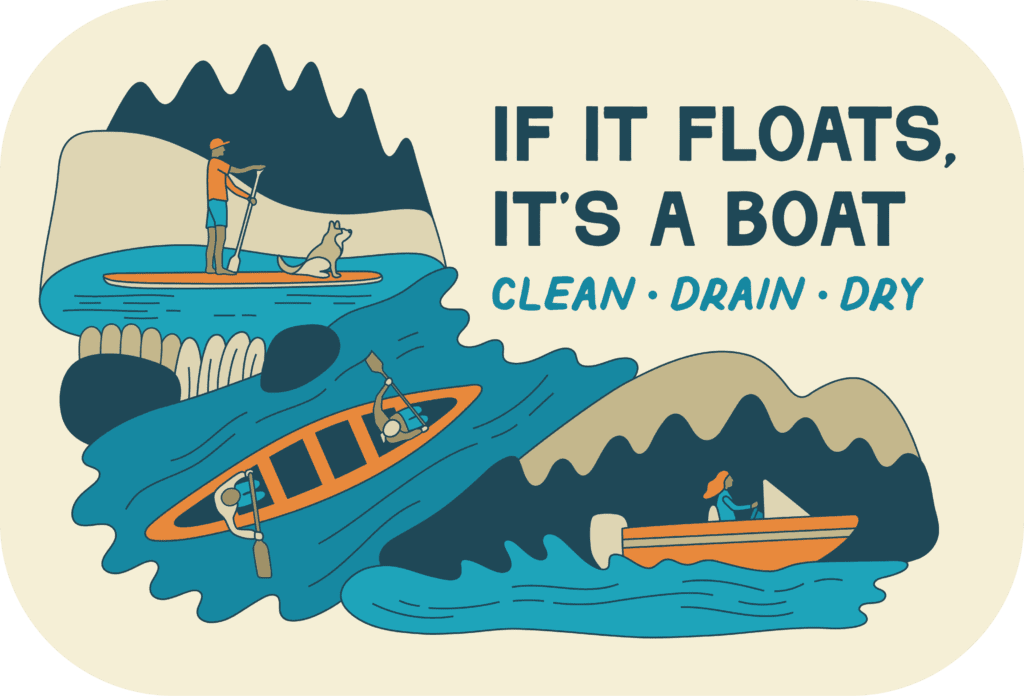
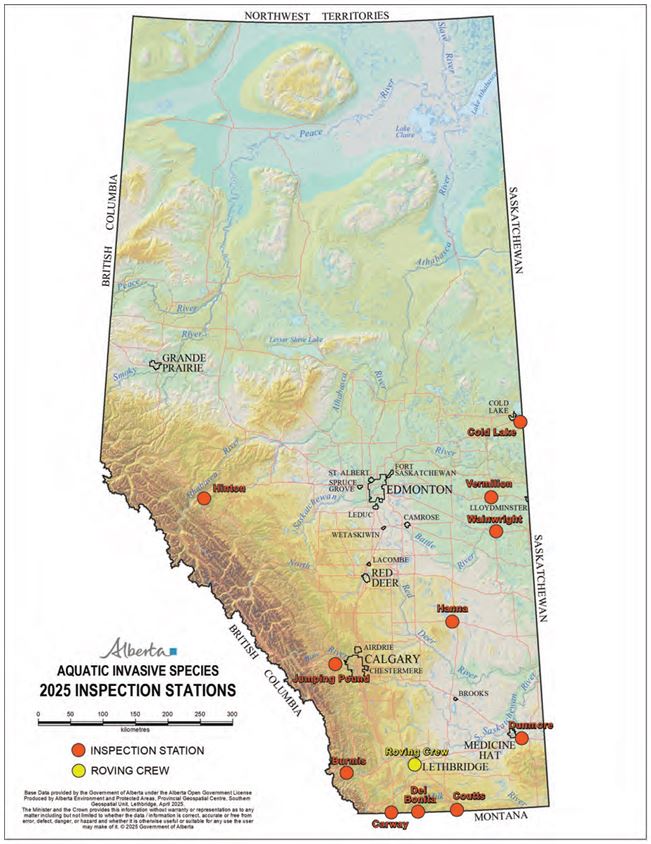
4. KNOW THE LAW
As of June 1, 2025, anyone transporting a watercraft, such as a boat, jet ski, kayak, canoe, or paddleboard, into Alberta from the east or south borders is legally required to stop at a watercraft inspection station.
New for 2025: If the nearest station is closed, boaters are now legally required to actively seek out an open inspection station and have their watercraft inspected—either within 7 days of entry and before launching in any Alberta waterbody, whichever comes first. Failing to comply can result in a $4,200 fine. All watercrafts must also have their drain plugs pulled while being transported on Alberta highways. Failure to pull the plug may result in a $600 fine. This is a change from the previous requirement, which only mandated stopping when driving past an open inspection station. Boaters must now take proactive steps to ensure their watercraft is inspected, even if no open station is encountered upon entry.
Upon inspection, you'll receive a proof-of-inspection form and sticker to display on your watercraft. Even if you're entering from the west or north, you must stop at any open watercraft inspection station you encounter. These rules apply to both motorized and non-motorized watercraft. Plan ahead. Know where the stations are located and always stop when required. Help protect Alberta’s waters—because once invasive species arrive, they’re nearly impossible to remove.
Find more information here: alberta.ca/watercraft-inspections
5. DON'T LET IT LOOSE
The intentional release of pets, dumping of aquarium contents, and release of live bait are among the primary mechanisms of spread for aquatic invasive species. In Alberta, the release of aquarium pets into waterways has resulted in over 100 ponds heavily infested with goldfish. The release of Crayfish kept as pets or fishing bait has allowed them to establish in all major Alberta watersheds. Dumped aquarium contents may introduce diseases and parasites that harm native aquatic species, as well as introduce non-native aquatic plants, such as Yellow Floating Heart, that can proliferate in Alberta's waters. Even Marimo Moss Balls, a popular aquarium feature, have repeatedly been found to harbor Zebra mussels—one of the most damaging aquatic invasives. Federal law prohibits the release of non-native species into fish-bearing waterbodies in Canada, and violators could face serious repercussions.
Don't Let it Loose! You can do your part to Protect Our Waters: rehome or donate unwanted pets like goldfish, properly dispose of bait, and never dump aquarium water or species into any waterbody or drainage area.
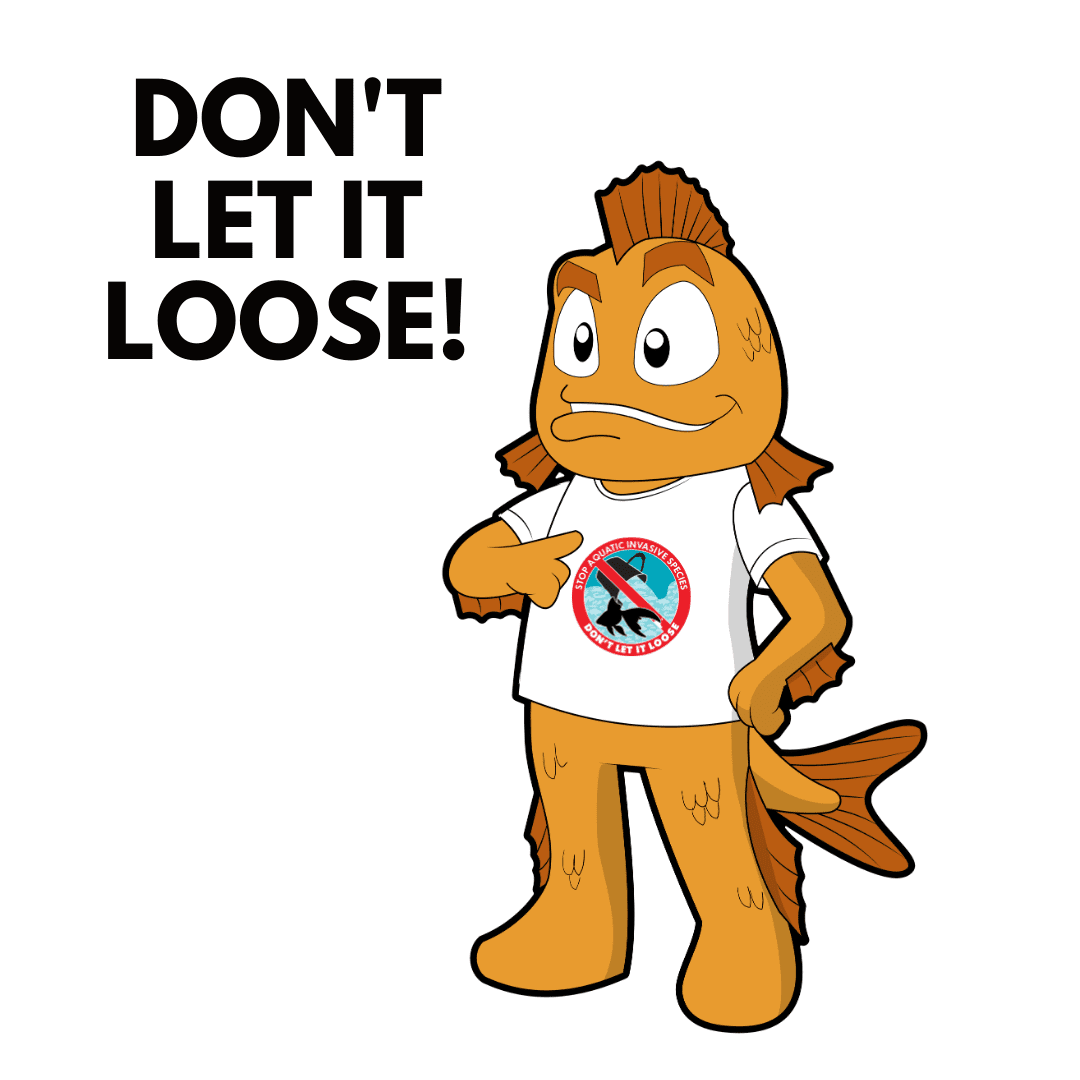
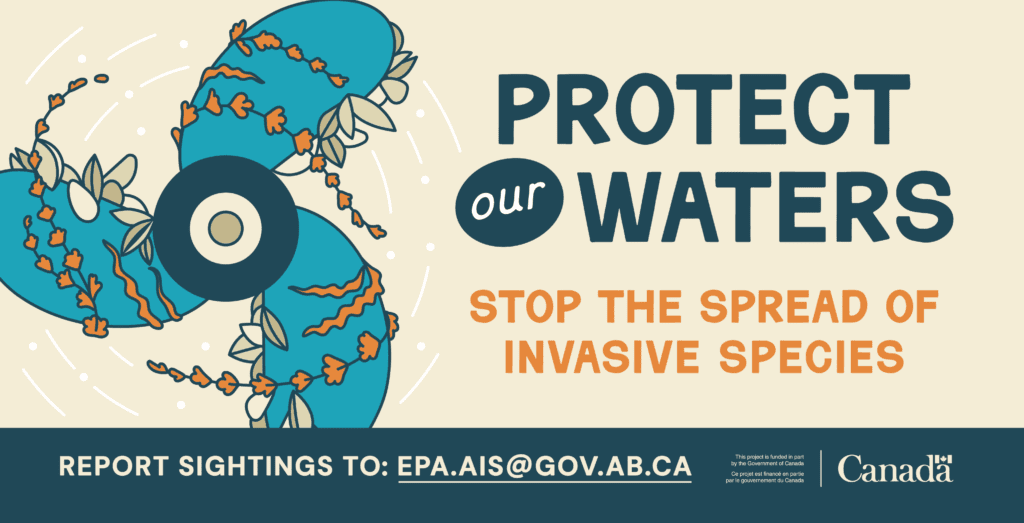
Protect Our Waters
Both web and print-quality images are available for promotion, contact info@abinvasives.ca, if you are interested. Please feel free to promote these images on your websites, newsletters, or wherever you see fit!
Additional information can be found at:
- Alberta Environment and Protected Areas' Clean, Drain, Dry your Gear
- Alberta Environment and Protected Areas' Aquatic Invasive Species Task Force
- Alberta Environment and Protected Areas' Watercraft Inspections
- Alberta Environment and Protected Areas' Conservation K9 Program
- Alberta Environment and Protected Areas' Mussel Infographic
- Alberta Environment and Protected Areas' Aquatic Invasive Species Pocket Guide
- Alberta Environment and Protected Areas' Whirling Disease Decontamination Protocol
- Invasive Species Centre's Commercial Haulers - Know Before You Go
- Invasive Species Centre's Commercial Haulers - Provincial Regulations Summary
- AISC's Zebra/Quagga Mussel Fact Sheet
- AISC's Golden Mussel Fact Sheet
- AISC's Protect Our Waters Quick Facts Card
- AISC's Protect Our Waters Activity Page
- AISC's Protect Our Waters Colouring Pages


